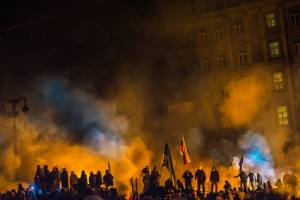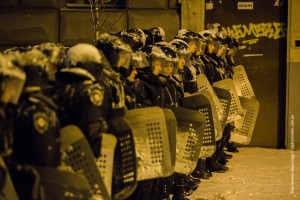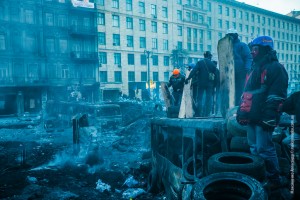
Photo used under Creative Commons License
Summer Howard, Staff Writer
This past November, the Ukrainian government decided to move toward establishing better relations with Russia. Infuriated that their president, Viktor Yanukovych, did not want to be closely affiliated with the European Union, citizens who support ties with the Western world took to the streets of Kiev in protest. Many in the eastern part of the country, however, would prefer to be allied with Russia. These divided loyalties caused a serious rift in the Ukrainian citizenry.
Since then, there have been instances of violence between the government and its citizens, some of which included the kidnapping of opposition leaders and dead protesters. The Ukrainian athletes at the Winter Olympics even asked if they could wear black armbands in support of the protests in their country. At the end of the Sochi Games, the Ukrainian parliament voted out the president and released Yulia Tymoshenko, an opposition leader, on February 22. Despite the Ukrainian president’s flight of the capitol on the same day he was expelled from the government, the troubles in Ukraine were far from over.

Photo used under Creative Commons License
Over the last weekend of February, Russian President Vladimir Putin allowed 6,000 Russian soldiers to invade the Crimean Peninsula of Ukraine, the peninsula that is most sympathetic to ties with Russia. On Saturday of that weekend, President Obama made a phone call to President Putin in an attempt to stop him from carrying out any more action against Ukraine. However, Obama’s attempt fell on deaf ears.
Despite Putin’s unresponsiveness, further efforts to intervene in Ukraine continue. Secretary of State John Kerry announced a visit to Kiev to meet with Ukraine’s Prime Minister Arseny Yatseniuk, the replacement for Prime Minister Mykola Azarov, who resigned in late January. The Prime Minister warns that war is in the future if Russia does not stop the movement of its military into Ukraine. Meanwhile, the United States’ ambassador and others state that international law is being broken by Russia’s invasion of Ukraine.

Photo used under Creative Commons License
The tension has continued to build in the Crimean Peninsula, where Russian troops have taken control easily, perhaps due to the support of many Ukrainian citizens in that region. Threats issued by the Russian Black Sea Fleet have also been reported, and the fear of being stuck in a pending war is hanging over the heads of citizens not opposed to the new Ukrainian government.
Only time will tell if this conflict can be resolved peacefully. Until then, the world will be watching.
For more information, visit:
http://www.bbc.com/news/world-europe-25182823
http://www.theguardian.com/world/2014/jan/28/ukraine-resignation-pm-protest-laws
http://www.nydailynews.com/news/world/ukraine-president-flees-office-home-article-1.1689786
This is great! Love seeing a good solid world news piece
Thank you so much Kira!